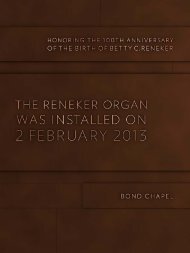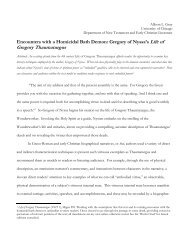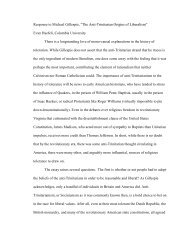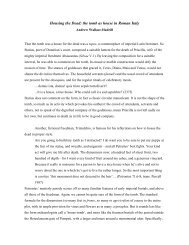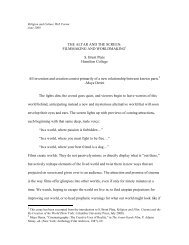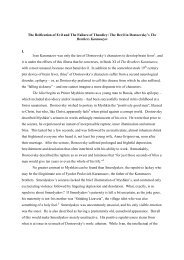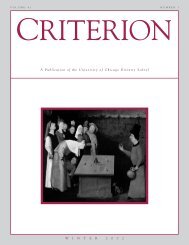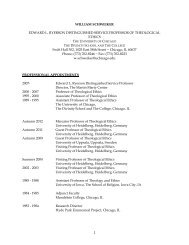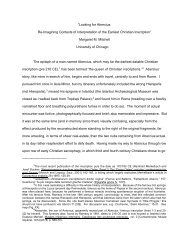Response to W. David Hall: “The Primacy of Rhetoric” Glenn ...
Response to W. David Hall: “The Primacy of Rhetoric” Glenn ...
Response to W. David Hall: “The Primacy of Rhetoric” Glenn ...
Create successful ePaper yourself
Turn your PDF publications into a flip-book with our unique Google optimized e-Paper software.
critical thinking. Soon, I also became involved in creating an interdisciplinary <br />
Communication major based on a “new trivium” combining philosophy, speech <br />
communication, and rhe<strong>to</strong>ric. In the classroom and the curriculum committee, I had <br />
become a partisan for the sort <strong>of</strong> humanistically inspired educational reform that <strong>Hall</strong> <br />
alludes <strong>to</strong>. His reading <strong>of</strong> Grassi sheds light on the successes <strong>of</strong> this effort, as well as some <strong>of</strong> <br />
the places we fell short. <br />
First, I would refer <strong>to</strong> the idea <strong>of</strong> ingenium or inventiveness as creative response <strong>to</strong> <br />
necessity; a capacity that, in humans, lends meaning <strong>to</strong> language and gives the “arts” their <br />
purpose (7‐8). In many ways, the civic engagement courses anchoring the core curriculum <br />
in my institution were an attempt <strong>to</strong> train ingenium, or at any rate <strong>to</strong> unleash it. These <br />
courses utilized service learning projects and “real assessments,” in which students were <br />
thrown in<strong>to</strong> actual or simulated practical contexts (necessity) and asked <strong>to</strong> invent <br />
responses <strong>to</strong> the problems they identified therein (ingenium). Students have done <br />
surprisingly well at this, producing projects that both fulfilled the outcomes set by faculty, <br />
and impressed external community agencies. <strong>Hall</strong> notes that for Grassi and Vico, ingenium <br />
is also tied integrally <strong>to</strong> rhe<strong>to</strong>ric, inasmuch as rhe<strong>to</strong>ric trains its users <strong>to</strong> “find the <strong>to</strong>pics” <br />
that will work in a given discursive situation and trains the mind <strong>to</strong> respond imaginatively <br />
<strong>to</strong> actual practical contexts, in contrast <strong>to</strong> the abstractions <strong>of</strong> method (9‐10). Interestingly, <br />
our civic engagement course paired the hands‐on projects with a unit on critical thinking, <br />
using a textbook that showcased a set <strong>of</strong> analytical categories that essentially were taken <br />
from the classical list <strong>of</strong> <strong>to</strong>pics, even if they were not named as such. Students were <br />
prompted <strong>to</strong> approach their service projects using the <strong>to</strong>ols acquired in the critical thinking <br />
unit. I am convinced that the critical thinking exercises helped the students respond <br />
inventively <strong>to</strong> their practical tasks; but as an academic exercise, the results were rather <br />
disappointing—students were not, generally, able <strong>to</strong> come back <strong>to</strong> the classroom and apply



